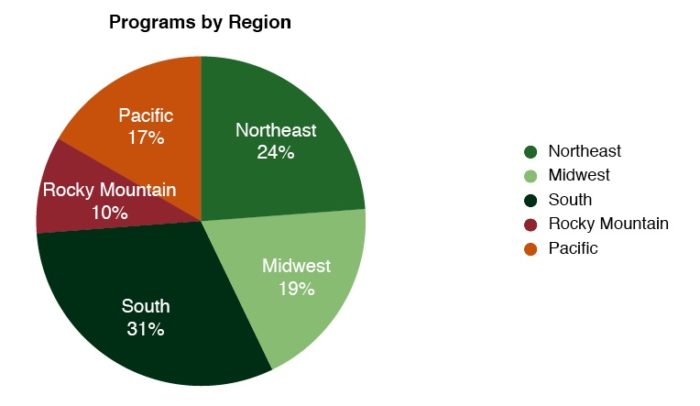Image Credit: National Home Performance Council
Image Credit: National Home Performance Council Utilities sponsor 113 of the 126 whole-home retrofit programs found on the DSIRE website, the NHPC found. At the time of the NHPC study, in May, the Property Assessed Clean Energy loan program run by the Town of Babylon, on Long Island, New York, was the only one of its type in the country that supported the whole-home retrofit approach, the NHPC noted in the study. The PACE program retrofit funds are secured by municipal liens on the homeowner’s property.
The Database of State Incentives for Renewables and Efficiency, a comprehensive source of information on state, local, utility, and federal incentives and policies that promote renewable energy and energy efficiency, has long been recognized as one of the most helpful planning tools for homeowners, remodelers, and builders contemplating residential retrofits.
But the number and scale of programs listed by DSIRE have grown significantly since 1995, when the Department of Energy-funded service was created by the North Carolina Solar Center and the Interstate Renewable Energy Council. To help put the DSIRE’s offerings in perspective, the National Home Performance Council, a Washington, DC-based advocacy group for whole-home retrofit initiatives, set out to present an overview of the “universe” of programs in the database.
By the time NHPC completed its study, in May 2010, it had identified 126 programs that fit the NHPC’s criteria, which include a “whole-home approach to energy conservation by providing access to a whole-house audit, and support for a number of energy efficiency measures including insulation and weather-sealing.” NHPC then parsed the information into several descriptive categories: geographic distribution of programs; program sponsors; program type; type of audit used; auditor qualifications; use of third-party auditors (vs. auditor-contractors); audit costs (free, subsidized or market-rate); available rebate or other incentives; financing options; and on-bill financing options.
A step toward discovering what works
NHPC, which released the results of its study in December, does offer some comparative analysis of different approaches to whole-house retrofit enterprise, but also points out it essentially is presenting broad, baseline information upon which more-intensive studies and in-depth analyses of “best practices” can be conducted.
The study leaders divided the U.S. into five regions – Northeast, Southeast, Midwest, the Rocky Mountain area, and Pacific West.
Among the findings in the region-by-region breakdown: Eight Rocky Mountain states have the smallest number of programs – 12, or 9.5% of the total — although 7 of the 12 were based in Colorado. It also turns out that 14 states in the South have the largest number of programs – 39, or 31% of total programs – reflecting the fact that several states (notably Florida, Texas, Kentucky, and North Carolina) have a large number of utility-sponsored programs, the study notes.
The 11 states in the study’s Northeast region have 30 programs, or 24% of the total, many of which also were utility-sponsored programs with state-level coordination. The 12 states in the study’s Midwest region have 24 programs, or 19% of the total, while the five states in the Pacific West region have 21 programs, almost 17% of the total.
Weekly Newsletter
Get building science and energy efficiency advice, plus special offers, in your inbox.













One Comment
No Mention of Home Star?
It's surprising there was no mention in the article or study about Home Star (aka 'Cash for Caulkers"), which is a whole home retrofit program currently failing to get through the House. I guess not mentioning its doomed fate is a way to focus on the positives of what programs are available, but here's on article on why it did not pass for those who are interested: http://www.greentechbuyer.org/blog/why-home-star-is-doomed-in-2011.html
Log in or create an account to post a comment.
Sign up Log in